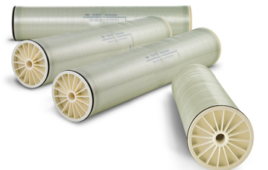Cyanobacteria, bacteria that obtain their energy through photosynthesis, are of considerable interest as bio-factories, organisms that could be harnessed to generate a range of industrially useful products.
Part of their appeal is that they can grow on sunlight and carbon dioxide alone and thus could contribute to lowering greenhouse gas emissions and moving away from a petrochemical-based economy.
However, familiar cyanobacterial strains grow more slowly than the bacterial and yeast bio-factories already in use, and their genetic and metabolic networks are not as well understood.
So it was exciting news when a group of scientists led by Himadri B. Pakrasi, PhD, the George William and Irene Koechig Freiberg professor of biology in Arts & Sciences at Washington Univ. in St. Louis, reported in Scientific Reports that they have identified a fast growing cyanobacterial strain, called Synechococcus elongatus UTEX 2973.
Rapid growth may allow this cyanobacterial strain to outcompete contaminating ones and eventually to synthesize larger quantities of biofuel or other valuable products.
It also has the more immediate benefit of making it easier to do the experimental work needed to understand the bacterium well enough that it can serve as a “chassis” that can be retooled for a variety of purposes. Because other cyanobacterial strains grow sluggishly, it takes weeks or months to perform experiments with them that can be performed in E. coli or yeast in days.
The newly identified strain might ultimately prove useful for carbon sequestration, biofuel production, biosynthesis of valuable chemicals and the search for novel pharmaceuticals.
“What intrigues me most about these microbes is their ingenuity,” Pakrasi said. “They have somehow figured out how to multiply rapidly by using sunlight and carbon dioxide very efficiently.” Pakrasi, who also serves as director of Washington University’s International Center for Advanced Renewable Energy and Sustainability (I-CARES), and has been a prominent advocate of cyanobacterial synthetic biology for a decade.
Hiding in plain sight
Like the famous purloined letter, the cyanobacterial strain was hiding in plain sight—or to be precise, in a collection of algae cultures at the Univ. of Texas in Austin. (Cyanobacteria are sometimes called blue-green algae, but this a misnomer.)
Although most cyanobacteria grow slowly, in 1955 two scientists at the Univ. of Texas at Austin described a fast-growing cyanobacterial strain collected from a campus creek.
Whereas most strains grew by 5 to 8% per hour, this strain grew by 30% per hour. What’s more, it grew fastest at the relatively high temperature of 38 C (104 F). This strain was eventually deposited in the UTEX algae culture collection as Synechococcus leopoliensis UTEX 625.
However, at some point the UTEX 625 strain was contaminated and lost its rapid growth property. The Pakrasi lab obtained a frozen sample of the UTEX strain, and by careful coaxing under appropriate conditions, recovered a pure, fast-growing strain from the mixed culture of the deposited algae.
Under favorable conditions, the newly isolated strain grows at more than 50 percent per hour, the highest growth rate reported to date for any cyanobacterial strain, and almost twice as fast as a widely studied close relative. Since the new strain may not be the one that was described in 1955, the scientists deposited it in the UTEX algae collection as Synechococcus elongatus UTEX 2973.
Kicking the tires on the new model
To characterize the new strain, Washington Univ. sequenced its genome. To the scientists’ surprise, the new strain turned out to be remarkably similar to a widely studied cyanobacterium, Synechococcus elongatus PCC 7942, originally discovered far away from Texas (in lakes in California), that grows only half as fast.
Since the genome sequences of the two strains are 99.8% identical, the genetic determinants of rapid growth almost certainly lie in the remaining 0.2%.
The proteomes (the set of proteins produced by an organism) of both of these strains were analyzed at the Environmental Molecular Sciences Laboratory, a Dept. of Energy national scientific user facility located at Pacific Northwest National Laboratory in Richland, Wash. This data, which covers 68% of the proteins the microbes produce, will guide further work with both strains.
The scientists also showed that the genome of the new strain can be easily manipulated, a characteristic essential to its use as a host for projects in synthetic biology.
“Cyanobacteria have the potential to be the ideal biofactories for sustainable carbon negative production of numerous compounds,” Pakrasi said. “This fast-growing strain should help to realize that dream.”
Source: Univ. of Washington, St. Louis




